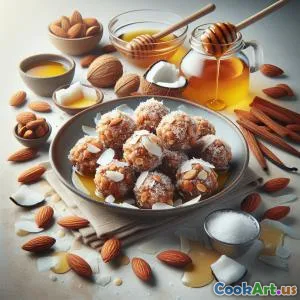Textural Elements in Beverage Design
6 min read Explore how textural elements enhance beverage design, creating unique experiences through innovative techniques and ingredients. April 11, 2025 11:45
Textural Elements in Beverage Design
In the world of beverages, particularly in cocktails and mixology, the focus often lies on flavors, aromas, and aesthetics. However, an equally essential yet frequently overlooked aspect is texture. Texture can elevate a drink from an ordinary refreshment to an extraordinary experience, influencing how we perceive flavor and delighting our senses in unexpected ways.
Understanding Texture in Beverages
Texture refers to the feel of a beverage in the mouth, often described using terms such as smooth, creamy, chunky, airy, or gritty. This aspect of a drink can significantly alter our overall enjoyment and satisfaction. When designing a beverage, it’s crucial to consider how various components can contribute to its texture.
The Role of Ice
Ice is one of the most fundamental elements that can affect the texture of a drink. Not only does it chill beverages, but it can also provide a crunchy or slushy texture. Innovative ice techniques, such as using large ice cubes that melt slowly, crushed ice for a slushy feel, or ice spheres that add a dramatic flair, can greatly enhance the drinking experience.
Crushed Ice vs. Large Cubes
Crushed ice is perfect for cocktails like the Mojito or the Slushy Margarita, where a refreshing texture is desired. In contrast, large ice cubes are ideal for drinks like whiskey on the rocks, where the goal is to chill without diluting the drink too quickly.
Foam and Emulsion
Foams and emulsions have gained popularity in the cocktail world for their ability to add a light, airy texture to drinks. Techniques like using egg whites or aquafaba (the liquid from canned chickpeas) can create frothy textures that not only look appealing but also add a creamy mouthfeel.
The Science Behind Foam
Foams are created by incorporating air into a liquid, stabilizing it with proteins. This process can enhance the aroma of a drink and create a delightful contrast to denser components, such as spirits or syrups.
Layering and Density
Creating layered drinks adds a visual and textural intrigue. By carefully selecting ingredients with different densities, bartenders can craft drinks that visually impress and provide a unique mouthfeel as layers blend upon sipping.
Techniques for Layering
To achieve a layered effect, pour liquids gently over the back of a spoon or use a slow, controlled pour. Popular layered cocktails include the B-52 and the Rainbow Layered Shot, showcasing how texture, color, and flavor can unite in one glass.
The Influence of Carbonation
Carbonation introduces a lively and effervescent texture to beverages. The fizz enhances the mouthfeel and can elevate flavors, making them more vibrant. Drinks such as sparkling cocktails or soda-infused beverages benefit from this textural component.
Types of Carbonation
From soft bubbles in sparkling wines to the aggressive fizz of club soda, the level of carbonation can dramatically affect the drinking experience. Knowing how to balance carbonation with other textures can lead to unique cocktail creations.
Unconventional Ingredients for Texture
Exploring unique ingredients can unlock a world of textures in beverage design. From using chia seeds for a gelatinous texture to incorporating nut milks for creaminess, the possibilities are endless.
Examples of Textural Ingredients
- Chia Seeds - When hydrated, they create a unique gelatinous texture.
- Nut Milks - Almond or cashew milk can add creaminess without dairy.
- Pureed Fruits - Offers a chunky, fresh texture to smoothies and cocktails.
Balancing Flavor and Texture
Creating a successful drink involves balancing flavor, aroma, and texture. Consider how textures can enhance or contrast with flavors to craft a well-rounded beverage. For instance, a creamy cocktail may benefit from a zesty citrus element to cut through the richness, creating a harmonious experience.
Conclusion
Incorporating textural elements into beverage design not only elevates the overall experience but also allows for creativity and innovation in mixology. By exploring various techniques and ingredients, bartenders and beverage enthusiasts alike can craft drinks that are not just enjoyed through taste but also through a delightful tapestry of textures. So next time you mix a cocktail, remember the importance of texture—it's the secret ingredient that might just take your drink to the next level.









